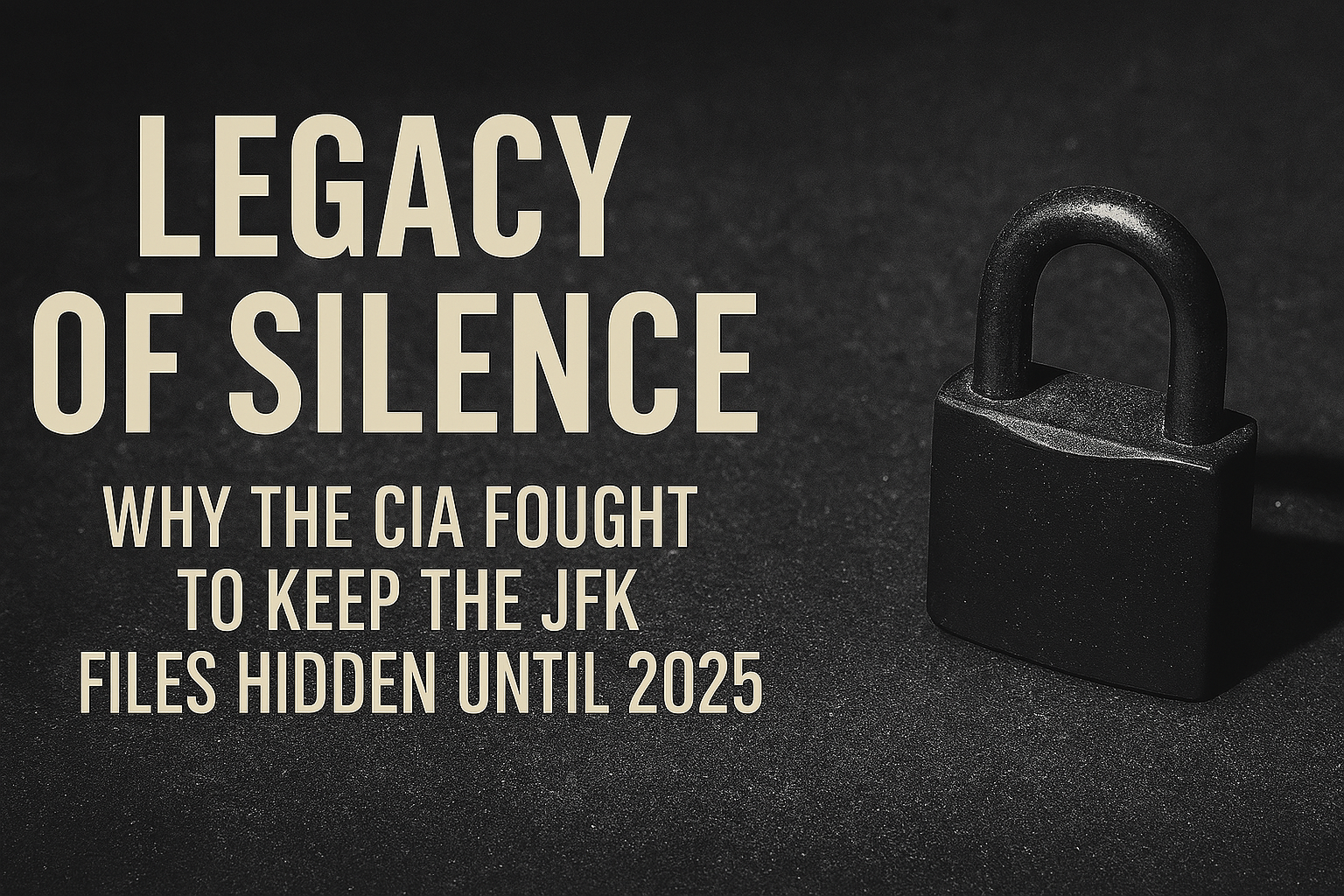The truth wasn’t just buried-it was protected. Here’s what the Agency didn’t want you to see, and why they stalled for decades.
🚪 Secrecy by Design
The JFK Records Act of 1992 set a clear deadline: All government records related to the assassination were to be released by 2017.
That didn’t happen.
Instead, the CIA, FBI, and other agencies continued to withhold thousands of documents, citing national security concerns-even though the assassination occurred over half a century earlier.
It took until March 2025-after public pressure, lawsuits, and a presidential executive order-for the last wave to finally be released.
The obvious question is:
What were they hiding that took 62 years to come clean about?
🧠 The Excuses: “National Security” and “Sources & Methods”
For decades, the CIA argued that certain files could not be released because they:
- Contained classified sources or methods still in use
- Would reveal identities of agents or assets
- Might damage diplomatic relations with foreign governments (particularly Russia, Cuba, and Mexico)
But the 2025 files show that much of this wasn’t about protecting operations-it was about protecting reputations.
📁 The Real Reasons They Delayed
According to internal CIA memos (now public), here’s what the agency was really trying to avoid:
- Admitting they surveilled Oswald but didn’t act on it
- Revealing they manipulated internal investigations (including Joannides’ actions)
- Exposing covert programs like Operation Mockingbird that undermined journalistic independence
- Disclosing their internal dissent about how JFK’s death was handled from the inside
In short: It wasn’t national security. It was institutional damage control.
💣 The Smoking Delay: The 1998 Files That Were Marked “Do Not Release”
One of the most telling discoveries from the 2025 release?
A batch of documents that were reviewed and sealed in 1998-not for active national security concerns, but because they were “embarrassing to the agency.”
One handwritten note attached to a memo about Angleton reads:
“Recommend indefinite delay-too many unresolved questions. Don’t invite press attention.”
That’s not protection. That’s obstruction.
🧩 What This Tells Us About the System
If it takes 62 years, multiple lawsuits, a sitting president’s order, and relentless pressure just to get files on an event that changed American history, it shows:
- The system is built to delay accountability
- Agencies are not afraid of the public-they’re afraid of precedent
- What’s considered “too sensitive” is often just “too damaging”
The 2025 release shows us that history was not being protected-it was being managed.
🔚 Conclusion: The Truth Can’t Compete with Delay
In the end, the CIA didn’t bury a smoking gun.
They buried time itself-counting on public fatigue, turnover in Congress, and a shifting media landscape to let the story fade.
But it didn’t.
And now, in 2025, the truth is finally on the record-even if it’s decades too late for justice.

Leave a Reply